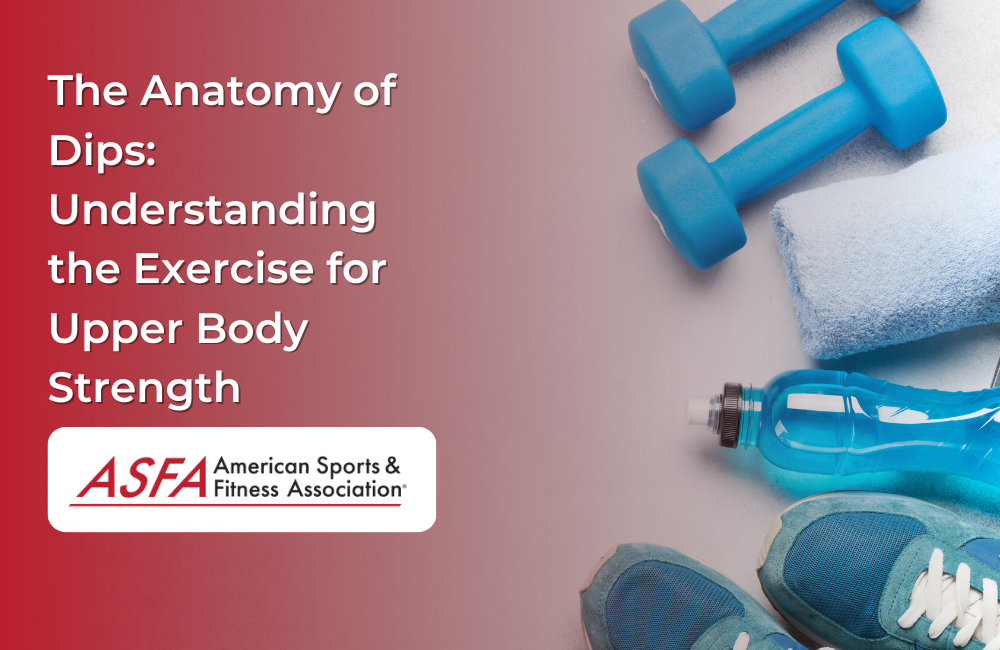Dips are a popular and effective bodyweight exercise known for targeting multiple muscle groups in the upper body. Whether you're a fitness enthusiast looking to build strength or someone seeking to diversify their workout routine, understanding the anatomy of dips can help you make the most of this versatile exercise. In this article, we'll delve into the various aspects of dips, including their benefits, muscles worked, proper form, and variations.
Muscles Engaged in Dips:
Dips primarily target the muscles of the upper body, including the chest, shoulders, and triceps. However, different variations of dips can emphasize specific muscle groups to varying degrees.
- Chest (Pectoralis Major): Dips are excellent for engaging the chest muscles. The downward movement activates the lower and middle portions of the pectoralis major, helping to develop a well-rounded chest.
- Shoulders (Anterior Deltoids): As you lower your body during a dip, the anterior deltoids play a crucial role in stabilizing your shoulders and controlling the descent.
- Triceps Brachii: Dips are renowned for their triceps-targeting benefits. The extension of the arms against resistance activates the triceps brachii, contributing to arm strength and development.
- Core Stabilizers: To maintain proper form, your core muscles engage to stabilize your body throughout the movement.
- Lats (Latissimus Dorsi): Dips also engage the lats to some extent, particularly during the downward phase of the movement.
Proper Dips Technique:
- Starting Position: Grip the parallel bars with your palms facing down. Keep your elbows locked and your shoulders down.
- Lowering Phase: Lower your body by bending your elbows until your shoulders are slightly below your elbows.
- Pushing Phase: Push yourself back up to the starting position by straightening your elbows, keeping your body aligned and engaging your core.
- Breathing: Inhale as you lower your body and exhale as you push yourself up.
Benefits of Dips:
- Upper Body Strength: Dips are a compound exercise that challenges multiple muscle groups, leading to increased upper body strength.
- Muscle Definition: Targeting the chest, shoulders, and triceps, dips contribute to muscle definition and a well-proportioned upper body.
- Functional Fitness: Dips mimic pushing movements commonly used in daily activities, making them relevant to functional fitness.
- Minimal Equipment: Dips can be performed on parallel bars, a dip station, or even between two stable surfaces, making them accessible with minimal equipment.
Variations of Dips:
- Triceps Dips: Lean forward slightly to emphasize the triceps. This variation involves more shoulder flexion.
- Chest Dips: Lean forward less to emphasize the chest. This variation involves more shoulder extension.
- Weighted Dips: Add weight using a dip belt or weighted vest to increase resistance and challenge your muscles further.
- Assisted Dips: Use resistance bands or an assisted dip machine to provide support, making dips more accessible for beginners.
- Ring Dips: Perform dips on gymnastic rings to challenge stability and engage stabilizer muscles.
Conclusion: A Versatile Exercise for Upper Body Strength
Dips are a dynamic bodyweight exercise that targets several upper body muscle groups simultaneously. By incorporating dips into your workout routine with proper technique and gradual progression, you can enhance your upper body strength, muscle definition, and overall fitness. Remember to prioritize form, listen to your body, and enjoy the rewarding journey of building a stronger and healthier physique through dips.





